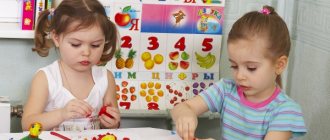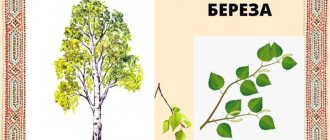Acetic acid and baking soda are inexpensive, accessible products that are widely used in the household.
Photo: Depositphotos.com. Author: ilona75.
They are used in baking confectionery products as a leavening agent or as cleaning agents and detergents that help get rid of scale, grease, lime deposits and stains on clothes.
And with the help of these substances, you can conduct an educational experience for children by making a “real volcano” from soda and vinegar at home.
How the components work and what happens during the experiment
When you combine soda with vinegar, you can observe a lot of foam and hear a characteristic hissing sound. Why is this happening?
This phenomenon is a simple chemical reaction that proceeds quite violently and spectacularly.
Baking soda, or sodium bicarbonate, is an alkali, and when combined with an acid, it breaks down into salt, water and carbon dioxide. In other words, substances are neutralized, due to which abundant foam is released.
On a note. The duration of the reaction depends on the volume of components that are used during the experiment. The more soda, the longer the eruption will be.
Beautiful artificial snow made from soda.
Boiling water in a glass
When you don’t have plasticine or a bottle at hand, you can use an ordinary glass to set up the experiment. The child can be told that the water will now boil without exposure to heat.
Recommended for you:
How to wash and clean a fish aquarium with soda at home
To do this you need:
- Cup.
- Lemon acid.
- Sodium bicarbonate.
- Water.
Follow these steps:
- Place the vessel on the tray;
- Add 2 tsp to a glass of water. NAHCO3;
- Add a teaspoon of lemon acid.
Instead of soda, you can add vinegar or citric acid (2.5 tsp of vinegar or citric acid per 500 ml of water).
Then boiling water is obtained. When sodium bicarbonate and citric acid or vinegar come into contact with water, they interact, causing the water to boil.
Conducting an experiment: 3 simple ways
By showing imagination and creativity, you can come up with various options for conducting this experiment.
Let's start with the simplest thing.
Method 1: “Storm in a teacup”
To conduct the experiment, you will need a glass of water, a tablespoon of vinegar and the same amount of soda.
You need to act in the following sequence:
- Place the vessel on a tray or large plate.
- Pour acetic acid into the water and stir.
- Add soda to the container. You can pour out the entire volume of the substance at once, but the reaction will last longer if you introduce it gradually.
As a result of the contact of the molecules of the substances used, sodium bicarbonate will begin to release carbon dioxide, due to which bubbling occurs.
Method 2: “Awakened Volcano”
To make the picture of the seething volcano more reliable, in addition to the main components, you will need an elongated plastic container, for example, a piece of a 0.5 liter bottle, a baby food jar or a soap bubble cone. You also need plasticine for decoration.
You need to act in this order:
- Cover a plastic container with plasticine, imitating the mouth of a volcano.
- Place the workpiece on a tray and fill it with soda to about halfway.
- Add a few tablespoons of vinegar.
Advice. You can make “volcanic lava” colored by mixing soda with dye. Then the spectacle will be truly amazing and will delight little spectators.
Method 3: "Rainbow Lava"
Children prefer colored and colorful spectacles, and you can make several volcanoes from soda and citric acid, adding different dyes.
Preparing the experiment will take a little longer than in previous cases, but the effect is worth it.
To organize the experiment you will need:
- 6 small cups or baby food containers;
- gouache paints of different shades;
- soda;
- lemon acid;
- water.
Advice. To protect the surface of the table, it is better to choose a tray or other stand with high sides, since the eruption will be violent and abundant.
You will need to do the following:
- Roll 6 colorful balls of sodium bicarbonate and gouache and set them aside.
- Place jars on a tray at some distance from each other and fill them with water.
- Dissolve citric acid in vessels. If you don’t have it in the house, you can pour vinegar.
- Throw one ball into each jar and observe the multi-colored reaction.
Thanks to this experiment, children will be able not only to watch the rainbow eruption, but also, after the reaction is completed, to look for a long time at the bizarre mixture of colors on the tray.
Did you know? Sodium bicarbonate in combination with vinegar will help inflate balloons without difficulty. To do this, you will need to pour acetic acid diluted with water in a 1:1 ratio into the bottle, and fill the ball with soda.
Then you need to put it on the neck of the vessel, secure it with tape or a rubber band (otherwise it will fall off) and lift it so that the bulk composition gets into the liquid.
When the components interact, a violent reaction will begin, as a result of which carbon dioxide will be released, which will fill the ball.
All that is needed
For the experiment you will need some household chemicals and decorative elements to create an island. The volcano island can be made from natural materials or use dinosaur sensory box sets.
A model of a volcano is made from plasticine. Creating a fabulous volcanic island for the experience is the main component of it and serves to develop the child's imagination and creativity. Such activities will help instill a love for chemistry and geography. The child will develop fine motor skills of the fingers while making plasticine terrain and its inhabitants.
To make an island you need:
- cardboard;
- stapler or narrow tape;
- box with colored plasticine;
- small animal toys;
- colorful pebbles;
- a large plastic box or bowl in which the island will stand;
- glass or plastic container with a volume of 200 ml for the volcano crater.
To conduct the experiment you will need:
- soda 20 g;
- food coloring:
- vinegar 9%;
- dish detergent 25 ml;
- water 100 ml.
Usually the experiment continues until mom runs out of all the baking soda and vinegar, so be patient.
Children cannot carry out the experiment on their own without adults. If vinegar gets into a child's eyes or mouth, it can cause a burn to the mucous membranes, and if swallowed, it can cause a burn to the esophagus.
Precautions when working with chemicals
Important! Any substance, even the most harmless at first glance, can be dangerous if handled incorrectly. The components for the experiments listed are no exception.
To ensure that the “volcano splashing with hissing lava” brings only joy and the fun does not end in trouble, the following precautions must be observed:
- The experiment should only be carried out under adult supervision. Children should not be allowed to experiment with chemicals on their own.
- Before starting the experiment, you should stock up on kitchen towels in order to clean up in time if a caustic liquid spills.
- When working with acid, it is important to prevent it from coming into contact with exposed skin to avoid burns, and if this happens, immediately wash off the liquid with water. You can protect your hands with rubber gloves.
- When there is a “volcanic eruption,” you should not come close to it or lean over the vessels in order to better see what is happening. During boiling, caustic splashes can get on the skin or mucous membrane of the eyes.
- After completing the experiment, you should not leave the used materials; you should immediately drain the remaining liquid into the sink, wash the dishes and put the chemicals out of the reach of children.
colored lava
You can also make many volcanoes with different colored dyes.
To organize the experience you will need:
- Small cups or baby food jars in the amount of 6 pcs.
- Gouache of different colors.
- Sodium bicarbonate.
- Water.
- Vinegar.
- Tray.
The following actions are performed:
- Balls of 6 different colors are rolled out of soda and gouache.
- Place the vessels on a tray.
- Pour vinegar into them.
- Place prepared balls into each vessel.
Recommended for you:
How to make slime from soda: with your own hands, at home
A colorful violent reaction will occur. You can also watch how different colors are mixed on a tray.
Big Bang
Children will especially like this drink. To simulate a big bang, you need the following:
- You will need a coating that is not afraid to get dirty, so get ready for a mess.
- You will need a decent sized container, such as a liter plastic bottle.
- To shape the appearance of the product you will need clay or foil, you can use plasticine. To add realism, paint the volcano black and brown. It will take some time for it to dry.
- Add hydrogen peroxide. You need 6 percent peroxide, pour half a cup of peroxide into the container located in the product. Be careful and careful when using peroxide. If you come into contact with hydrogen for a long time, you can get hurt, or the peroxide can get into your eyes and harm them. Children are not allowed to use peroxide. To make the eruption even more spectacular, you can use a 30% peroxide solution, but it will be extremely difficult to obtain.
- Mix about 3 drops yellow food coloring and 7 drops red. Then add two tablespoons of dishwashing detergent to the resulting mixture.
- Stir a tablespoon of dry yeast in a small bowl with 3 tablespoons of water.
- Pour the yeast into the resulting product and step away.
Making a fairytale island
You can build an island in a large plastic container. Pour real water and line the bottom with round pebbles. Make a container for the volcano from a baby food jar or an old glass. For the mountain inside which the container will stand, you need to make a cardboard model; your child will be happy to cover it with plasticine.
The sequence of making a volcanic mountain:
- cut out a circle of the required diameter from thick cardboard;
- make a cut from the edge to the center of the circle;
- roll up a cone;
- the edges of the cone are fastened with a stapler or tape;
- cut off the upper part of the cone at a height equal to the container chosen for the volcano;
- place the container inside the cone.
I coat the top of the mountain with plasticine. To do this, roll out small brown plasticine cakes and stick them to a paper cone, completely covering the cardboard. The top of the volcano can be made of red plasticine, which will imitate hot lava.
They place a volcanic mountain on a dry island of pebbles. They are seated around small rubber animals that are among children's toys. Multi-colored amazing dinosaurs or wolves, foxes, bunnies, bears and other inhabitants of the forest and jungle. Depending on what animals were planted, vegetation for the island is selected. Large tree ferns and horsetails for dinosaurs, and ordinary fir trees and birches for bunnies and foxes.
Plastic plants are also often sold in sets for children's games. You can use a leaf of a living fern and twigs of plants if it is summer outside.
Plants can also be molded from plasticine, made from threads and beads or ordinary cardboard.
You can make small houses out of cardboard for plastic Indians and soldiers. It is better to use cardboard to make plants and houses when the island is in a container with blue-dyed sand instead of water or on a blue plasticine sea.
Salt dough volcano
For the experiment you need a minimum of materials and a little patience. To make a volcano model with your own hands, you will need:
- Tray;
- Plastic bottle;
- Food paint;
- Foil;
- Dishwashing liquid;
- Salty dough;
- Vinegar;
- Baking soda.
After we have found everything we need, we begin modeling. Let's get started by following the instructions:
- To begin, take a plastic bottle and cut it into two equal parts. Place its upper part on a tray with its neck facing up.
- Take the foil and cut it into strips, wrap them around the bottle so that you get a mountain.
- Then make the salt dough, divide it into 3 parts and carefully place it on the foil, completely cover the foil with the dough. To make the volcano more realistic, paint its mouth with food coloring.
- Next we will do the experiment itself. To begin, take a few teaspoons of baking soda and pour the baking soda into the bottle, then add one and a half tablespoons of dishwashing liquid.
- Take a glass and pour a little vinegar into it, after tinting it with food coloring.
- Pour the resulting liquid into the volcano and colored foam should flow from the crater. The kids will definitely love the result.
Reusable craft
This option is very convenient, because you can return to the created volcano again and again. To create a craft you will need:
- Paper;
- Plastic lid for mayonnaise or sour cream;
- Foil;
- Gypsum plaster;
- Regular tape and masking tape;
- Acrylic paint;
- Basis for the product;
- Regular 1.5 liter bottle.
Next we follow the instructions. We do the following step by step:
- Cut the top of the plastic bottle so that you have a mountain of a suitable height, place it in the lid and secure it with tape. The result was a strong foundation for the volcano.
- Attach the resulting craft to the plywood with tape. You can also use a plastic backing as a base.
- Then you need to give the bottle a cone shape. Take some foil and wrap it around the bottle and secure it with masking tape. We take the paper, tear it into small pieces and secure them with masking tape around the product.
- Dilute the gypsum plaster with water to a thick consistency and pour it onto the product. Correct the necessary places.
- Wait two to three hours, let the product dry thoroughly, then decorate it to your liking.
For the eruption you will need: vinegar, a little baking soda, red food coloring, a little dishwashing detergent.
Now the most interesting stage has come. Place a little baking soda inside the crater, add a little dishwashing liquid and add red food coloring. If required, add a little water. Add a little vinegar to the crater of the volcano, and the eruption begins!





